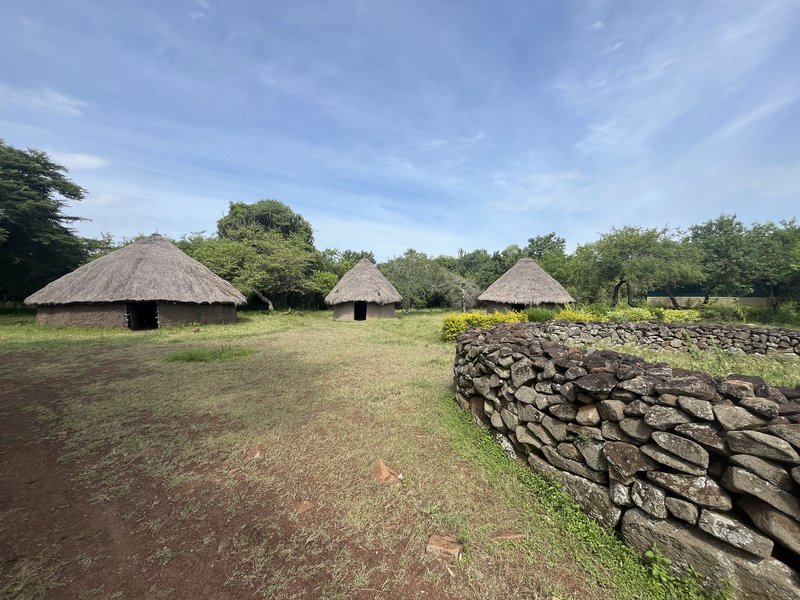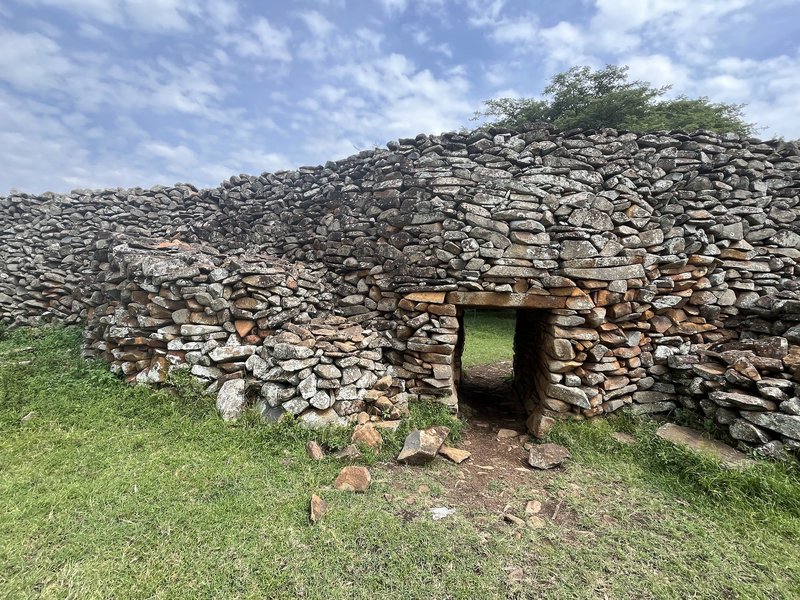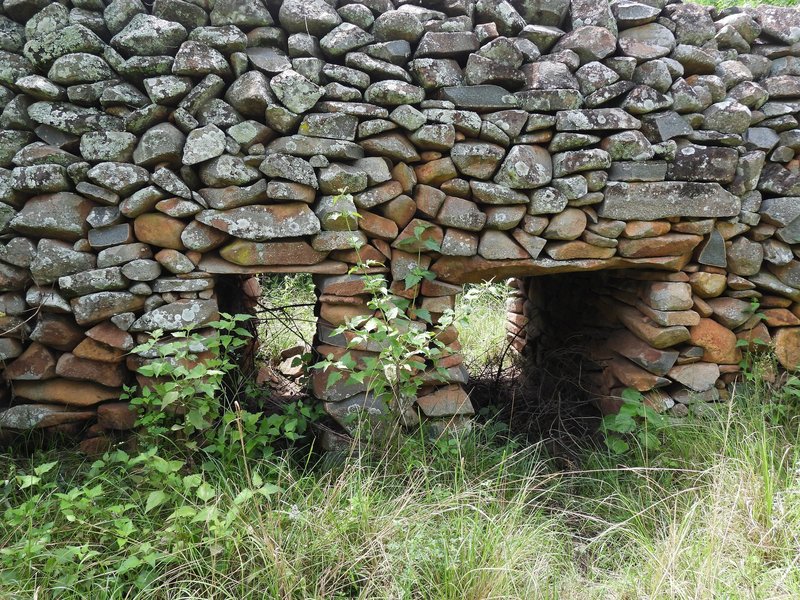Even seven years after its inscription as a WHS, Thimlich Ohinga is still one of the 20 least visited by our members. Only three were there before me, and this low popularity was confirmed by looking at the visitors’ book, as it showed about 10 entries per month for 2025. The site just lies too far from the general Kenyan tourist itineraries, which focus on the East Coast beaches and the safari parks in the center. It is close to Lake Victoria, though, and has a fine rural setting.
I got there with a driver/guide from the hub of Kisumu (Kenya’s 4th largest city), which has daily flights to Nairobi and decent places to stay, eat and shop. It took us 3 h 20 min to reach the site. The distance is only 163 km, but the final 19 km is on an unpaved road - sand with some stones and holes, but doable with a 4x4. From that road, Thimlich is signposted as well. After about 12km, the road beyond on was flooded (this may not be the case when you arrive later in the dry season) – a passer-by showed us a detour, which was also clearly visible on maps.me.

While all of Kenya has gone digital, this site accepts cash payment only. The fee for foreigners is 500 KSh (3,50 EUR) at the moment. Later, I learned that the staff feels abandoned by the National Museums of Kenya and the Province; there’s no electricity or running water at the site, for example. It’s also a good idea to bring your own lunch as nothing is available in the surroundings.
All these signs of remoteness and obscurity do not take away from the dedication of the staff. You will get a guided tour around the site, which takes about 1.5 hours. The tour starts at the ‘model compound’ (lower photo), where they have recreated the dwellings of the people who lived with their livestock within the stone enclosures that now define Thimlich Ohinga. The guide explained their customs, including the prominent role of the first wife in the family setup (the patriarch had four of them).
We then entered the first of the four enclosures that remain at Thimlich Ohinga. Right next to the gate, you’ll find a cute self-made wooden plaque. The gates and the walls have been restored to an almost perfect state (it got ICOMOS a bit worried how accurate this would be, but they accepted the explanation by the Kenyan authorities that it was all done by the book). The dry stone walls have bigger (uncut) stones on the outside and a layer of small stones in the middle to keep them stable (upper photo). There are lookout towers on each side of the single entrance, confirming the defensive nature of the structure. The entrances are also low, to further hinder anyone approaching.

Inside the walls, there’s not much left – here would have been the huts of the various family members, made out of mud and straw. The site occupies a fairly large area, and parts of it are overgrown, some (like the fourth compound on a hill) so much that it isn’t accessible anymore. There were excavations done in the 1980s, when remains of iron smelting at the site were found. You can also see sharpening stones, ánd I saw the stone where an Ancient Game was played (as recorded in our Connection).
We went into three of the compounds, the third having a distinctive “double gate”, where bigger and smaller animals could walk in and out. Although the extensive walls superficially may resemble those at Great Zimbabwe and the sites share a tradition in dry stone construction, Thimlich Ohinga is much younger (by some 600 years) and it was "just" a place where a few extended families lived (these Ohingni used to be common among the pastoral communities of the Lake Victoria Basin), instead of a capital of an influential Kingdom that Great Zimbabwe was. So, in all, it's not a grandiose sight, but still worth the detour as it adds the distinct Lake Victoria region to your Kenya itinerary.

More on
Comments
No comments yet.
